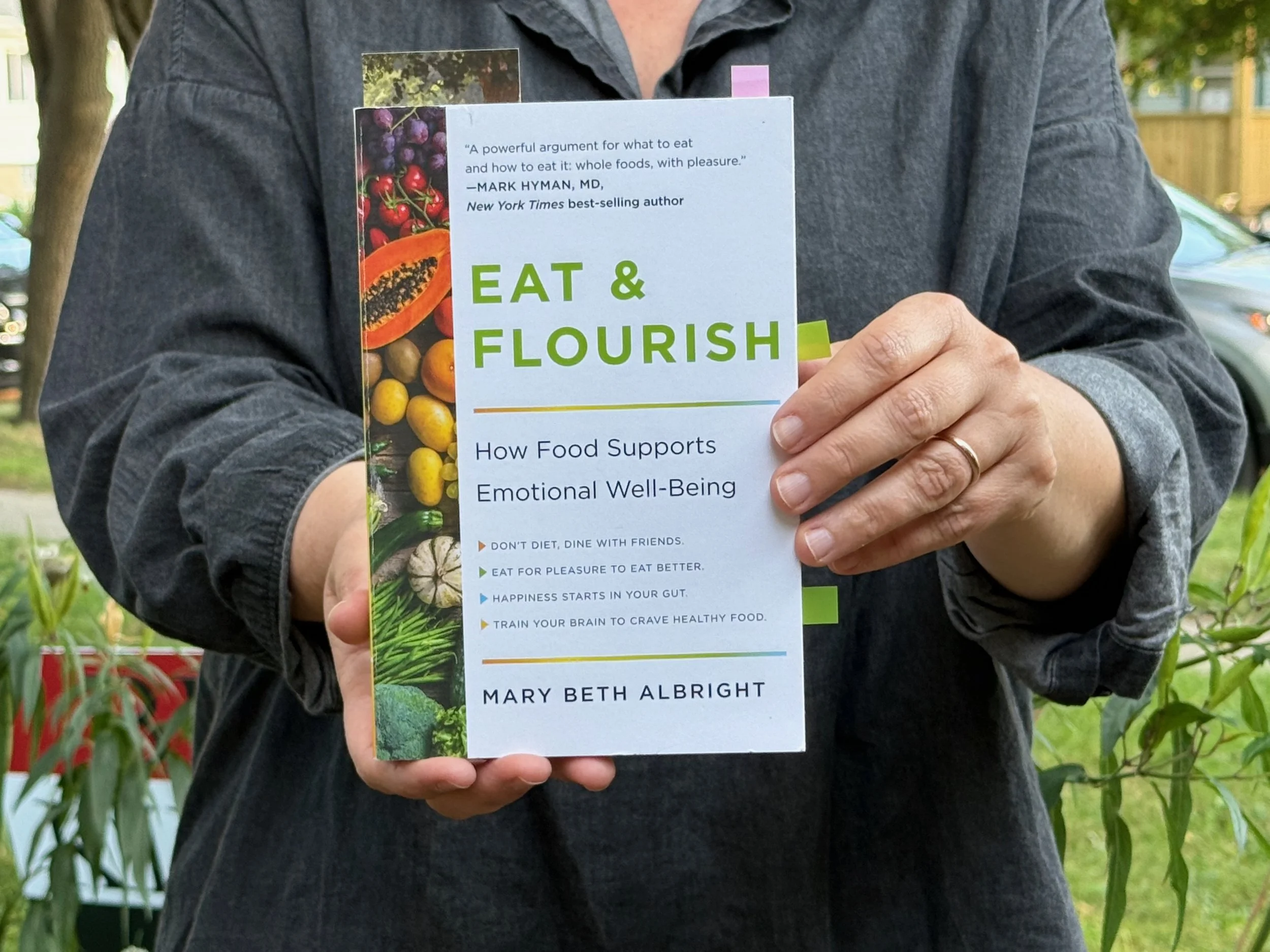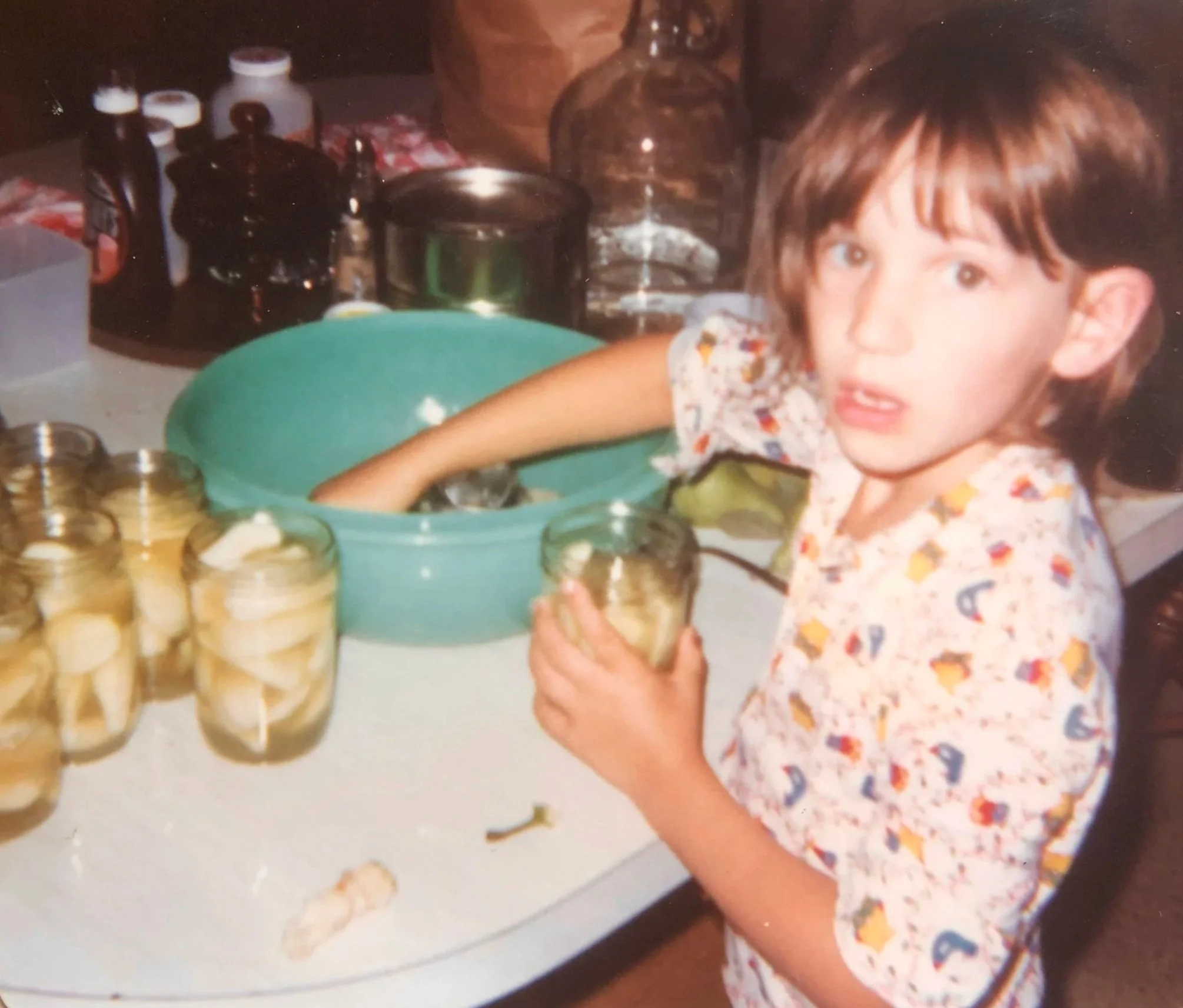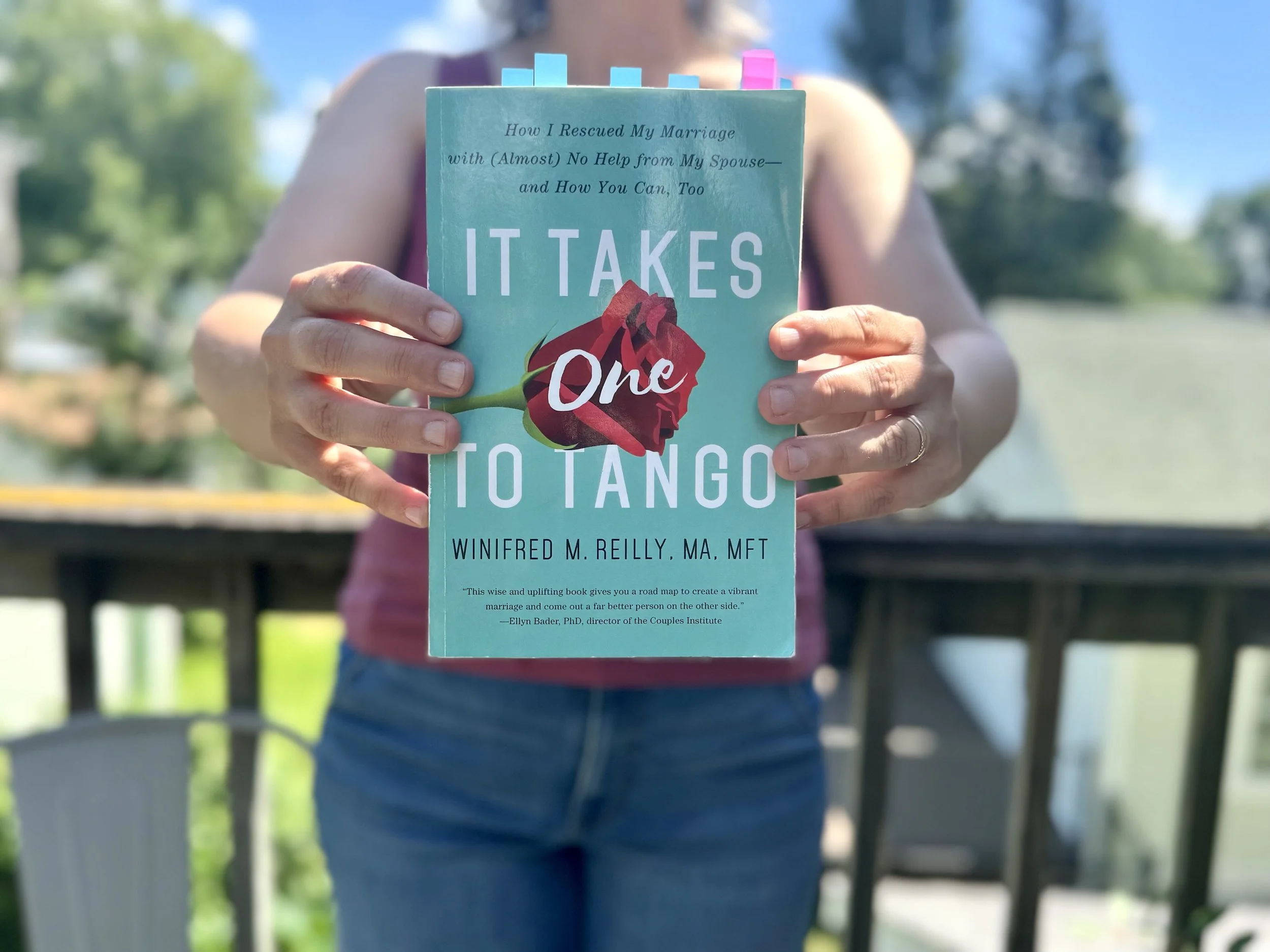
Blog

Book Review: “Eat & Flourish: How Food Supports Emotional Well-Being”
As someone who has wrestled with emotional eating most of my life, I was skeptical of yet another book promising to solve our food-mood mysteries. But Albright delivers something refreshingly different: rather than peddling the same tired morality tales about "good" and "bad" foods that have kept us trapped in cycles of shame for generations, she dives deep into the emerging field of nutritional psychiatry to show us how eating actually works in our brains and bodies.

Food Was Love, Security, and the Only Acceptable Vice: Understanding My Emotional Eating Story
You might think that because I’ve written about food, eating, nutrition, and emotional and mental health, I have this area of my life well in hand. The truth is sometimes I do and sometimes I don’t. Our relationships with food are complicated. Here’s the story of mine.

A Therapist’s Guide to Eating for Better Mental and Emotional Health
As a therapist, I've witnessed how eating patterns impact my clients' emotional wellbeing and their ability to cope with the ups and downs of their lives. Understanding this food-mood connection can help you recognize how nourishing your body can become a powerful tool for supporting your mental health and emotional balance.

The Gut-Brain Connection: Why Digestive Health Matters in Therapy
Emerging research reveals that the gut-brain axis is a complex communication network linking our gastrointestinal tract and central nervous system. It plays a crucial role in emotional regulation, cognitive function, and overall mental wellbeing. For therapists and clients alike, understanding this connection opens new pathways for healing and therapeutic success.

The Partner You Want to Be: Shifting Focus from Finding to Becoming
The most revolutionary thing you can do in dating is to stop asking "Are they right for me?" and start asking "Am I becoming the partner I want to be?" This shift in focus changes everything—not just how you show up in relationships, but the quality of connection you attract and create.

The Dating App Cycle: Why You Keep Deleting and Re-downloading
While it's easy to blame the apps themselves, the deeper issue often lies in how we approach dating altogether. Most of us download these apps seeking external validation and someone who understands us. We're focused entirely on finding rather than being.

Book Review: "It Takes One to Tango" by Winifred M. Reilly
If you've ever felt stuck in your relationship, wondering if change is possible when your partner seems unwilling or unable to meet you halfway, this book offers both hope and a practical roadmap forward. Winifred Reilly, a Marriage and Family Therapist with decades of experience treating couples, presents a refreshingly honest and empowering approach: you can transform your relationship by focusing on what you can control—yourself.

In Defense of Couples Therapy: Getting Help is a Sign of Strength, Not Failure
Seeking couples therapy isn't admitting defeat. It's declaring war on complacency.

Sleep Hygiene: A Therapist's Guide to Better Mental Health Through Better Sleep
Sleep isn't just about physical rest—it's one of the most powerful tools we have for supporting mental health, emotional regulation, and overall wellbeing.

The Liberation of Post-Menopause: Embracing Your Most Powerful Years
Post-menopause isn't the consolation prize after your "real" life ends. It's not about gracefully accepting decline or making peace with being invisible. It's about stepping into potentially the most liberated, authentic, and powerful phase of your entire life.
Let's talk about what that actually looks like.

Beyond Symptom Management: Building a Life That Honors Who You're Becoming
This isn't another list of supplements to take or foods to avoid. While those things can be helpful, they miss the bigger picture. Real thriving during menopause means building a life that reflects your authentic values, needs, and desires – not what you think you "should" want or what worked for you in previous decades.

The Emotional Landscape of Menopause: Reclaiming Your Power in a Youth-Obsessed Culture
While mainstream conversations about menopause focus on managing hot flashes or finding the latest supplement to keep us looking "youthful," they completely sidestep the profound emotional and psychological transformation that's underway. Menopause is about confronting some of the deepest questions of human existence while living in a society that pretends aging doesn't have to happen.

Menopause 101: Understanding the Basics of This Life Transition
Menopause is one of the most significant biological transitions a woman will experience, yet many of us enter this phase with surprisingly little knowledge about what to expect. This article covers the fundamentals: what menopause is, the stages, and the wide range of symptoms that are possible. We also explore the various healthcare providers who can support you during this journey.

For Further Study: Environmental Grief Sources and References
An extensive list of resources for further study on environmental grief, including both Western approaches and other cultural frameworks: research, therapy approaches, Indigenous concepts and knowledge, and more.

Expanding Our Understanding: Alternative Frameworks for Environmental Grief
Western psychology is beginning to recognize environmental grief as a legitimate response to ecological destruction, but other cultural frameworks have long understood the deep emotional connections between humans and the natural world.

Understanding Environmental Loss as Disenfranchised Grief
The psychological impact of environmental grief is very real: anticipatory grief for future losses, feelings of helplessness and overwhelm, existential anxiety about the future of our planet, and painful disconnection from others who "don't get it." But environmental grief demonstrates psychological health, not pathology.

Navigating Pregnancy Loss as a Couple: When Grief Looks Different for Each Parent
When a couple experiences a pregnancy loss, each partner may experience and express their grief in profoundly different ways. Understanding how grief can manifest differently for each parent, and learning to navigate these differences together, can be crucial for both individual healing and relationship strength during this difficult time.

Disenfranchised Grief and Pregnancy Loss: Understanding Your Valid and Natural Response
The loss of a pregnancy—whether through miscarriage, stillbirth, or other circumstances—brings profound grief that can feel overwhelming and isolating. Understanding the concept of disenfranchised grief can help explain why this loss may feel particularly challenging to navigate in our society.

The Reality of Pet Loss Grief
The grief you feel when your animal companion dies is real, profound, and deserving of recognition—even if the world around you doesn't always understand.

When History Becomes Personal Loss: Historical Trauma and Disenfranchised Grief
Grief about historical atrocities or ongoing systemic oppression represents one of the most misunderstood forms of disenfranchised grief in our society.